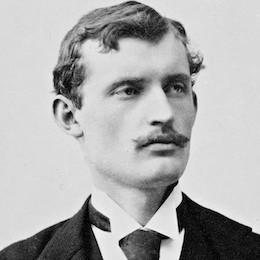Edvard Munch
1863 (Løten (Norvége)) / 1944 (Ekely (Norvége))
Munch always said that he painted what he saw. Creator of an eminently personal supernaturalism, the Norwegian does not seek the immobile harmony of Mondrian or the spiritual abstraction of Kandinsky, his exact contemporaries. However, like them, in his enterprise of destruction, he gives form to the invisible. Nothing reveals this regeneration of the world better than when in 1930, at the age of 67, he suffered a sudden loss of vision in his right eye due to intraocular hemorrhage. He then represents, in a whole series of paintings and large almost scientific drawings, the evolution of his lesions. Far from depicting abstract signs, Munch immediately identified the circular, bloody floating bodies that appeared before him as large birds with hooked beaks piercing his heart: "I see black spots that look like crows flying in the distance," he explained. In the artist's eyes - even if he is ill - the object and his vision remain one and the same thing.
Munch always said that he painted what he saw. Creator of an eminently personal supernaturalism, the Norwegian does not seek the immobile harmony of Mondrian or the spiritual abstraction of Kandinsky, his exact contemporaries. However, like them, in his enterprise of destruction, he gives form to the invisible. Nothing reveals this regeneration of the world better than when in 1930, at the age of 67, he suffered a sudden loss of vision in his right eye due to intraocular hemorrhage. He then represents, in a whole series of paintings and large almost scientific drawings, the evolution of his lesions. Far from depicting abstract signs, Munch immediately identified the circular, bloody floating bodies that appeared before him as large birds with hooked beaks piercing his heart: "I see black spots that look like crows flying in the distance," he explained. In the artist's eyes - even if he is ill - the object and his vision remain one and the same thing.
Artist's exhibitions
Edvard Munch, un poème de vie, d’amour et de mort
20/09/2022 - 22/01/2023
(Paris) Musée d'Orsay
20/09/2022 - 22/01/2023
(Paris) Musée d'Orsay
Les Contes étranges de N. H. Jacobsen
29/01/2020 - 26/07/2020
(Paris) Musée Bourdelle
29/01/2020 - 26/07/2020
(Paris) Musée Bourdelle
Franta. Humains
06/12/2018 - 05/02/2019
(Anvers) Museum de Reede
06/12/2018 - 05/02/2019
(Anvers) Museum de Reede
Hodler, Monet, Munch. Peindre l'impossible
15/09/2016 - 22/01/2016
(Paris) Musée Marmottan-Monet
15/09/2016 - 22/01/2016
(Paris) Musée Marmottan-Monet
Munch : Van Gogh
25/09/2015 - 17/01/2016
(Amsterdam) Musée Van Gogh
25/09/2015 - 17/01/2016
(Amsterdam) Musée Van Gogh
Les Clefs d'une passion
01/04/2015 - 06/07/2015
(Paris) Fondation Louis Vuitton
01/04/2015 - 06/07/2015
(Paris) Fondation Louis Vuitton
Portrait de Mallarmé-De Manet à Picasso
14/09/2013 - 16/12/2013
(Vulaines-sur-Seine) Musée Stéphane Mallarmé
14/09/2013 - 16/12/2013
(Vulaines-sur-Seine) Musée Stéphane Mallarmé
L’univers Munch
05/11/2011 - 22/01/2012
(Caen) Musée des Beaux-arts de Caen
05/11/2011 - 22/01/2012
(Caen) Musée des Beaux-arts de Caen
Edvard Munch, l’œil moderne
21/09/2011 - 09/01/2012
(Paris) Centre Pompidou
21/09/2011 - 09/01/2012
(Paris) Centre Pompidou
Edvard Munch ou l’ « Anti-Cri »
19/02/2010 - 18/07/2010
(Paris) Pinacothèque
19/02/2010 - 18/07/2010
(Paris) Pinacothèque
artist_books
Edvard Munch, Entre chambre et terre
Gérard Titus-Carmel Éditions Virgile, collection Carnet d’ateliers Peintre, passionné d’art moderne et de poésie, Gérard Titus-Carmel livre dans cet ouvrage une lecture personnelle de l’oeuvre d’Edvard Munch. Au début du XXe siècle, le grand maître norvégien explore dans un graphisme débridé et par de violents contrastes colorés les grandes questions de l’existence, de ...
